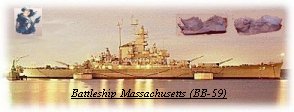HISTORICAL MILITARY DOCUMENTS AND ARTIFACTS
"EXTRACT FROM FIRST SERVICE RECORD BOOK RETURNED
TO THE TORPEDO STATION SINCE OUTBREAK OF WAR."

Click to read contents
ON WAR PATROL
On the night of December 10, 1941 the USS Triton (SS-201), commanded by Willis Ashford ("Pilly") Lent was patrolling the waters south of Wake Island when they spotted a Japanese destroyer-or cruiser-on the horizon. At about that same time, the ship evidently spotted Triton and turned toward her, closing rapidly. Lent took Triton deep and commenced evasive tactics. But the Japanese dropped no depth charges. Lent remained deep, deciding to make a sonar approach. From a depth of 120 feet he fired all four stern tubes, and went to 175 feet and ran away silently. After fifty-eight seconds, Lent heard "dull explosions." His crew cheered. On the first live shot of the war for Pearl Harbor submarines, Lent believed he had sunk his first target. A few days later the Triton withdrew and returned to Pearl Harbor.*
BIBLIOGRAPHY
Clay Blair, Jr., SILENT VICTORY: The U.S. Submarine War Against Japan,
J.B.Lippincott Company, Philadelphia & New York, First edition,1975
NOTES
* Silent Victory, pg. 105.
SUBMARINE LINKS
THE BATTLE OF CASABLANCA
(OPERATION TORCH)

16" Projectile Fragment
On November 8, 1942, U.S.S. Massachusetts (BB-59),affectionately known as "Big Mamie", was one of the American Naval Units involved in Operation
Torch, the allied invasion of North Africa. One of the targets of the invasion was Casablanca, a city in French Morocco with an excellent harbor which was in the hands of pro-Axis Vichy French forces. In her first combat the Battleship Massachusetts was taken under fire by the unfinished French Battleship Jean Bart, which was fitting out at a Casablanca pier. Skillfully avoiding Jean Bart's fire "Big Mamie" commenced firing her 16 inch guns at 7:04 AM at a range of 24,400 yards, about 12 miles. These were the first 16 inch shells fired by the United States against the European Axis Powers. By 7:20 AM Jean Bart had been hit five times and her 15 inch main battery guns were silent.
The projectile fragment pictured below is from one of the five 2,700-pound armor-piercing projectiles which struck the Jean Bart. The projectile, hit the enemy ship at a velocity of 1,520 feet per second and penetrated ten and one half inches of armor and decking material before detonating in an empty powder magazine some sixty feet from it's point of entry. This fragment is one of two that was originally picked up by Captain E.A. Lewis of the S.S. Washington Irving, the first ship to dock at Casablanca after the battle. The fragment weighs 25.5 pounds and is 15.25 inches long by 5.5 inches wide with an average thickness of 2.5 inches. More information may be obtained by clicking on the Thumbnail Document Links below.
THUMBNAIL DOCUMENT LINKS

16 Inch Rounds and Me, March 1986.
This photograph was taken in front of my office at EODMU Two Det Newport. These projectiles were found buried in a Connecticut junkyard. EOD transported them to our holding area where the base plugs were removed to insure that no explosives were present. When none were found each projectile was stamped "EMPTY". They then were placed in front of the DET for visual effect. A few months later both projectiles were transferred to a more appropriate home aboard the Battleship Massachusetts at Battleship Cove, Fall River, MA. As a token of "Big Mamie's" appreciation, the fragment pictured in the first Thumbnail Document Link was donated to our small ordnance display. I
acquired the fragment several years later when the display was retired.
BATTLESHIP LINKS
-
Battleship Massachusetts (BB-59).
This website gives you a fine overview of the life and history of "Big Mamie" and her sister ships located in Battleship Cove.
-
Jean Bart & Casablanca.
This website has several pictures of the French Battleship Jean Bart showing the damage she sustained from "Big Mamie's" 16 inch guns. This is a section of the "USS GALVESTON (C-17), USS MASSACHUSETTS (BB-59)" website created and maintained by R.W. Butler.
-
French Battleship Jean Bart
Photo of French Battleship Jean Bart at Casablanca pier following Allied aerial and naval bombardment during North African Invasion ("Operation Torch") . This is a section of the USS AUGUSTA HOME PAGE (CA-31).
Raymond R. Corridon
E-Mail Address
rayeso@aol.com
Copyright © 1997, Raymond R. Corridon
Revised -- 09.08.2007

Return to Ray's Home Page